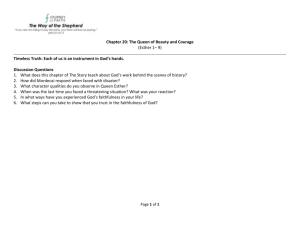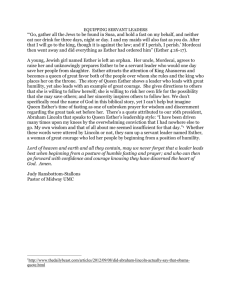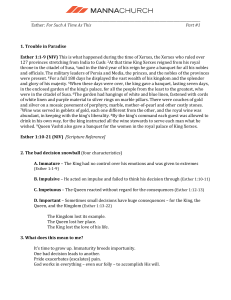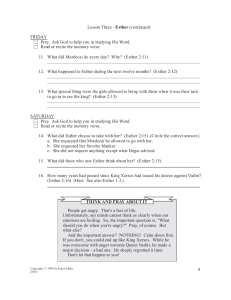Table of Contents
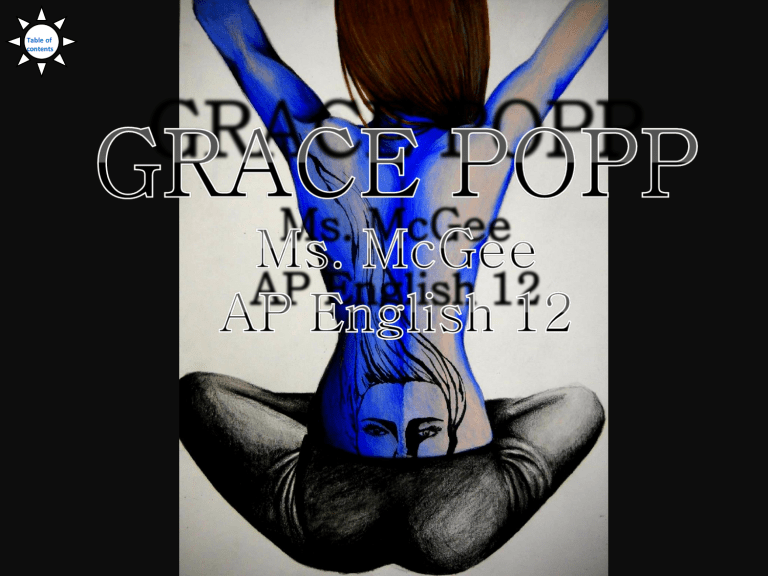
Table of contents
Table of Contents
Directions for the reader
Letter to the Reader is on Wiki
My Bucket List
Six word Memoir
Beneath the Bell Jar
More Mullet, Please?
Female Genital Mutilation Research Paper
Soul picture
3 Elementary School Writing Assignments
At the top of each slide is a small sun. To navigate to and from your current slide to the table of contents, click on the sun.
Bucket List
• Try and break in to Mike Tyson’s house and steal his tiger.
•
Go skydiving.
•
Travel through Italy and Greece.
•
Drive across the United States.
•
Sell one of my art pieces for over one thousand dollars.
•
Go scuba diving in the Caribbean.
•
Sing in a crowded club/restaurant.
•
Learn to play guitar.
•
Buy a motorcycle and (wearing leather pants) drive through the Midwest.
•
Go on an expedition in the Amazon.
•
Date someone with a fat wallet – not for long, of course (at least not for that reason only) – and make sure he has a yacht.
•
Speak out against something and convince listeners to see the issue the way Ido.
•
Write a novel.
•
Pay off all of my bills.
•
Go camping in the desert.
•
Create a charity for unprivileged children.
•
Meet Chelsea Handler.
•
Dye my hair dark red.
•
Go to Japan and eat authentic sushi in a pink wig.
•
Elope somewhere exotic with someone I love.
•
Have a long conversation with someone who has lived through the early twentieth century.
•
Try bartending in Ireland.
•
Go to Egypt and tour all of the pyramids
•
Kiss someone of worldly importance (like the president, or the Queen of England).
•
Live through 2012.
“
c o n s t a n t l y t r a n s f o r m i ng t h e w o r l d
’
s c o l o r s m o n o c h r o m a ti c .
”
April 14, 2010
Beneath the Bell Jar
Loneliness is a noun that makes one cringe. To feel it means feeling only yourself, and finding every other being or thing either unhelpful or uninterested. Sylvia Plath’s writing hits every soft spot a solitary person teetering on the edge of change feels: “I felt very still and very empty, the way the eye of the tornado must feel, moving dully along in the middle of the surrounding hullabaloo” (3). In Sylvia Plath's first and only novel,
The Bell Jar, she takes us on a journey by way of Esther Greenwood, a character she modeled from herself.
The novel begins when Esther earns an internship at a magazine in New York City, a place where she cannot seem to fit in. Instead of deciding for herself the things she does, she leaves those decisions to her peers, and her submissiveness towards them leads to further mental questioning. Set in the 1950s, The Bell Jar is a beautifully written piece of literature that chronicles Esther's downward spiral into mental instability.
Between her strife for a place to stand and her then-unrealistic dreams of becoming a writer, Esther falls deeper and deeper in to depression. Esther's confusion is what makes the book so relatable to the reader; being stuck between adolescence and adulthood is a place where no person wishes to be caught.
In the '50s, women were expected to live for four basic reasons: to cook, to clean, to reproduce, and to pleasure their men. Esther wants none of that. She wishes only to write, and do as she pleases. When her boss, Jay Cee, asks if she's interested in her work, Esther “felt like yelling the words, as if that might make them more convincing, but I controlled myself” (35). During her stay in New York City, Esther is distracted not only by the partying her fellow internees suggest she participate in, but also by her college sweetheart, Buddy
Willard, who insists she come visit him. When she arrives, she's reminded of all the reasons why she is repulsed by the idea of marrying Dr. Buddy Willard: “I began to think maybe it was true that when you were married and had children it was like being brainwashed, and afterward you went about as numb as a slave in a totalitarian state” (98). He doesn't believe in her dreams of becoming a writer – he'd rather her be Mrs. Buddy
Willard. Esther refers to him as a hypocrite for wanting a clean, virgin wife when he, himself, was no virgin.
She then decides secretly that she'd rather not see Buddy Willard ever again.
When she returns to New York, Esther breaks down in tears. She feels lost and alone, and wishes to do nothing but lie in bed. When her roommate, Doreen suggest she go on a double date with her boyfriend and his friend, Esther reluctantly agrees. She's introduced to Marco, “a woman-hater”, and endures a tipsy night with him, that ends with him attacking her and her rejecting him (123). After his ego is thrown, Marco goes on to call Esther a 'slut'. The next week she returns home, and she's overcome with anguish and confusion. She reacts by tossing her clothes from her roof.
Clad in the only outfit she has left, Esther allows all her hope to seep in to a pending writing course application she sent to a prestigious college. When a letter comes announcing her rejection, Esther's sadness deepens. She tries to pick up and write again, but is unable. Then she learns she didn't take all the required courses to become an English major. She attempts to spend her days sleeping, but sleep is a verb she is unable to perform. Soon, suicidal thoughts enter her head, and Esther's descent begins..
When Esther inquires about an extra amount of sleeping pills from her family doctor, the doctor suggests she see a psychiatrist. As she's escorted to the psychiatrist Dr. Gordon's office by her traditional, private mother, Esther becomes more and more irritated by his appearance. He's young, handsome, and has a portrait of his wife on his desk facing his patient, as if taunting them with how perfect his life is. When Dr.
Gordon insists on giving Esther electroshock therapy, she does every thing she can to avoid it. When she's forced to undergo the procedure, it's worse than she feared.
Instead of helping her, it only makes things worse. To make her mother happy, she tells her she's not returning to the psychiatric ward. When she returns home, she decides she no longer wishes to live, and starts her attempts at suicide.
Esther Greenwood's first attempt is slitting herself in the bathtub. Her second attempt is hanging herself with her mother's robe. Her third: visiting an island with old friends and their nephew. While there, she asks the nine-year-old boy how he would kill himself if he ever were going to. The boy answered: “I've often thought of that. I'd blow my brains out with a gun” (183). Esther's responding thoughts are: “I was disappointed. It was just like a man to do it with a gun” (183). She then leaves him on shore to try and drown herself in the ocean. Razors, drowning, hanging – they are all unsuccessful. Her life becomes one large mission to put an end to it. Her mother doesn't understand, her friends are no longer in touch, and her writing is no longer her saving grace. Esther decides overdosing on sleeping pills will be a peaceful way to end it.
She wakes up in a mental hospital.
The mental ward is not any easier for Esther to deal with. She insists she cannot sleep or eat, though the nurses inform her she is doing both. Esther tries everything to make the doctors find her insane and incurable. She wants nothing more than to be left alone (away from her mother...) and in the hospital bed where she insists she is unable to slumber. Her new doctor, the female Doctor Nolan, reassures Esther that she won't be getting visitors for a while. This pleases Esther. Here, Plath makes it obvious that the male psychiatrist, Gordon, was uninterested in Esther, while the female, Nolan, is interested only in helping Esther get better.
While in the confines of the hospital, Esther makes friends with Joan Gilling, another of Buddy Willard's ex-girlfriends. Joan and Esther have an odd, distant relationship; Joan is more like the lost puppy and Esther is like a jaded owner. As they both progress with their treatments, they become closer. One day, Esther walks in on Joan and another female patient just as they are getting intimate. When Esther asks Dr. Nolan what a woman can see in a woman that a woman can't see in a man, Dr. Nolan answers, “Tenderness” (256).
Eventually, Joan is released and buys her own apartment, while Esther is granted daily leave from the hospital to do as she pleases. On one of these leaves, Esther meets Irwin, a professor, and immediately decides to lose her virginity to him that night.
Out of curiosity, Esther does as she wants. During this experience, Esther's mindset is completely sane. Afterward, she begins to bleed. “It occurred to me that the blood was my answer. I couldn't possibly be a virgin any more. I smiled in the dark. I felt part of a great tradition” (267). However, the blood does not stop coming. This causes Esther to panic and run to Joan at her new apartment. While Joan grabs towels for Esther, she contemplates on what is happening to her: “Perhaps Irwin had injured me in some awful, obscure way, and all the while I lay there on Joan's sofa I was really dying” (270). Joan rushes her to the hospital where she's treated for hemorrhaging. Joan returns to the hospital soon thereafter.
After Joan's brought back to the ward, her behavior is strange. On one winter day, Joan disappears. The nurses find her hanging in a tree by the lake on the grounds. Joan's suicide brings Esther completely back to reality, because she realizes that it could've easily been her who took the easy way out. Esther attends Joan's funeral after Joan's father invited her. “I had been,
Mrs. Gilling said, one of Joan's best friends” (281). At Joan's funeral, Esther sees everything in a new light. Buddy Willard is there, and for the first time, Esther realizes how self-absorbed he is after he asks her if it was he who cause both Joan and herself to end up in a mental institution.
Soon after, Esther sits patiently awaiting the interview she must endure before being released from the asylum. Her mind is clear, but she's nervous. When her name is called, she enters the room with new hope, and in to her new life. Finally, the girl trapped under the bell jar is released like a firefly.
Sylvia Plath wrote The Bell Jar to echo her own life story, but she ended up mapping out an exaggerated version of the coming-of-age insanity everyone has the risk of going through. There is the trials of fitting in, the challenge of losing your innocence as gracefully as you can. Esther's confusion is eventually evened out by her curiosity in the future. Though the novel begins with her morbid thinking, it ends with her optimistic view of the future she's decided to wait out. “There ought, I thought, to be a ritual for being born twice – patched, retreaded and approved for the road...” (284).
Popp 1
Grace Popp
Ms. McGee
AP Eng 12
February 12, 2010
More Mullet, Please?
When the word “mullet” is uttered, there are two possible things that come to mind: a tropical fish and Billy Ray Cyrus.
Known most frequently as “business in the front, party in the back,” the mullet has come to be recognized as one of the least fashionable hairstyles in modern fashion. According to the website Brownielocks and the 3 Bears
, the mullet is “The hairstyle of America's blue-collar or redneck underbelly.”
The word appeared in the 1932 Webster's New International
Dictionary as a verb meaning “to curl or dress the hair” (“The
History of the Mullet”). As mentioned earlier, by Brownielocks and the 3 Bears
, the mullet is associated with the “rednecks”.
They suggested on their website that perhaps the mullet could’ve been created to shield the farmers’ necks from the blazing sun as they worked all day on the fields. However, the actual mullet originally became popular in the 1960s and 1970s, with Paul
McCartney and David Bowie as its prodders (“Mullet
(hairstyle)”). In the 1980s, when leg warmers and neon colors were in vogue, so was the mullet. Women sported it, and men sported it; it was emphasized with bouffant bangs and blond highlights. According to Wikipedia, bands like Guns N' Roses contributed to the style's familiarity. The style continued in to the mid 1990s (cough, cough, Billy Ray Cyrus), where the perm became a common addition to the style's eccentricity. One hairstyle inspired by the mullet was the rattail, a cut even more frowned upon and stereotyped as one for “rednecks.”
In the 2000s, mullets really became the butt of satirical
Popp 2 stereotypes after the 2001 release of Joe Dirt starring David
Spade (IMDB). The movie involved a “mullethead” janitor, born and bred in a trailer park, who traveled far and wide to find his parents – ignorant comedy and southern stereotypes included. In spite of the negative reputation the mullet received, it still thrived in popular culture. In Spain, the mullet was a very common haircut among Spanish men in Barcelona (“Mullets (hairstyle)”).
According to Urban Dictionary, the mullet “can only be pulled off by people with the confidence to be anachronistic. It keeps the hair out of your eyes, but you can still head-bang and enjoy the freedom of long hair.” Sounds like heaven.
Mullets have survived for decades, and they will continue to.
It is an ambiguous haircut that the world just cannot seem to shake. Is the mullet beautiful? Is it convenient? Is it hideous? The answers are all according to opinion. There is no right or wrong answer. Mullets are mullets, and they are here to stay.
